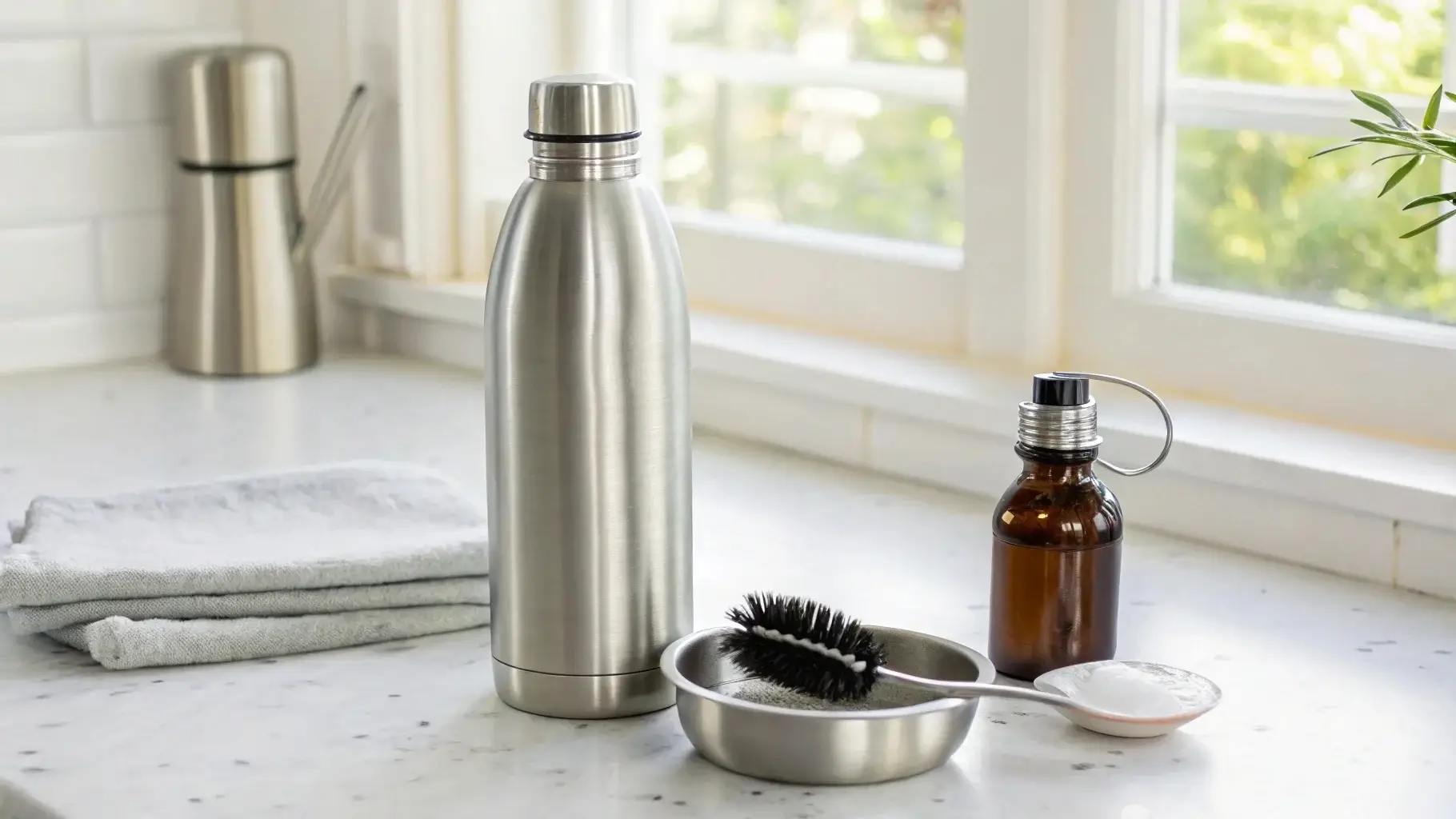
Finding black gunk in your water bottle can be unsettling, but is it dangerous? The black substance you're seeing could be mold, bacteria, or mineral deposits1. While the sight of it can be gross, understanding what it actually is and how to deal with it is crucial to your health and safety.
Black gunk in your water bottle could be a sign of mold or other harmful substances, but knowing what it is will help you determine if it's dangerous.
Let’s dive into the different possibilities of what that black stuff might be and how to handle it.
Is Black Mold in Water Bottles Harmful?
Black mold, also known as Stachybotrys chartarum, is a common problem in humid and damp environments. If mold is forming inside your water bottle, it’s important to understand the potential health risks2 associated with it.
Black mold is harmful and can cause respiratory issues, allergic reactions, and other health problems. It's essential to clean your bottle thoroughly to prevent exposure.
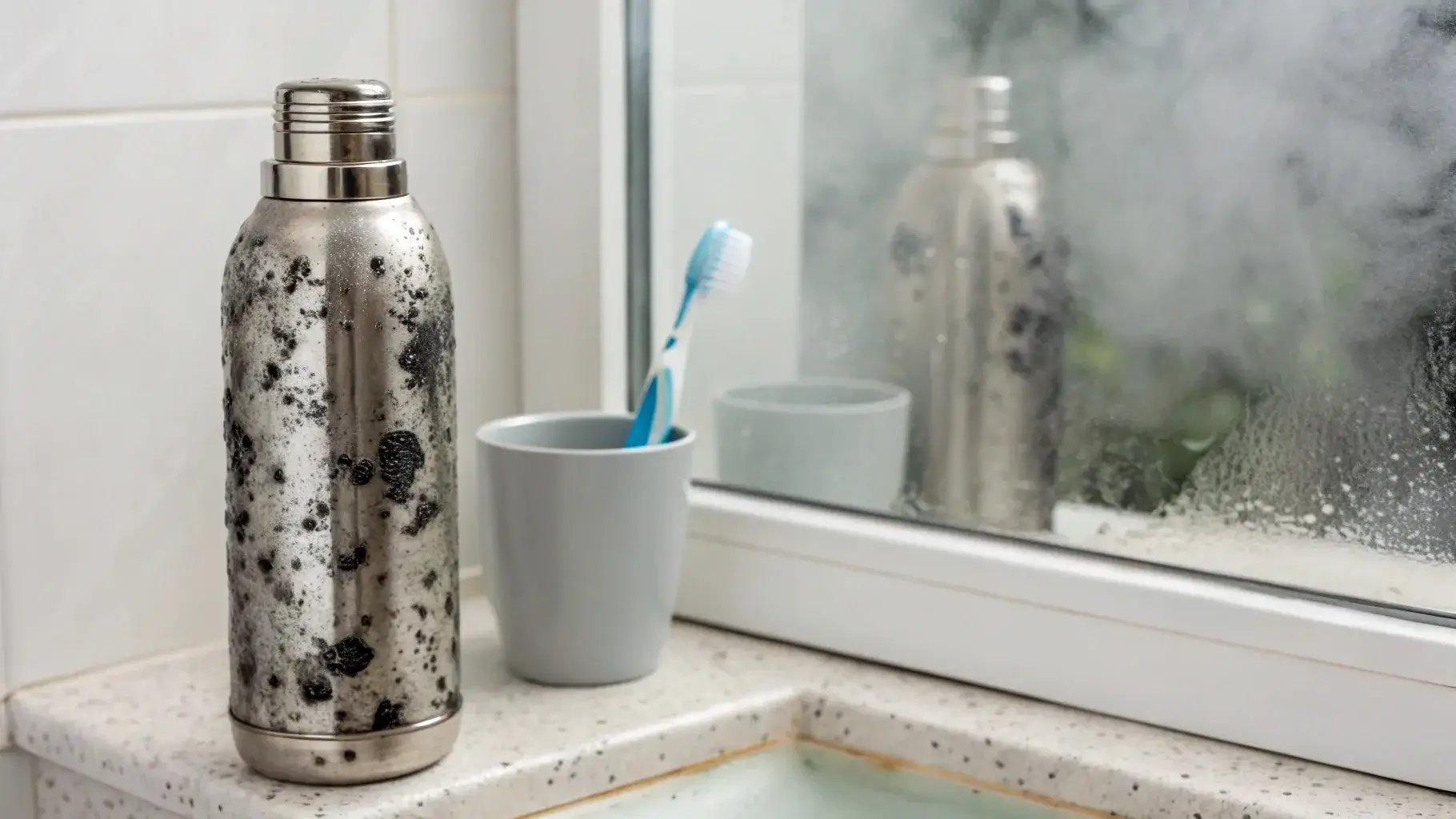
Health Risks of Black Mold
- Respiratory Problems: Breathing in mold spores can cause coughing, sneezing, or asthma-like symptoms.
- Allergic Reactions: Some people may experience allergic reactions like skin rashes, red eyes, or congestion.
- Toxic Effects: Prolonged exposure to black mold can result in more serious health issues like headaches and fatigue.
Mold Growth in Water Bottles
Mold thrives in moist environments, which is why water bottles are common places for it to grow3. If you leave your bottle with water inside for too long, especially in warm, dark conditions, you’re increasing the chance of mold forming.
What Is the Black Gunk in My Water Bottle?
The black gunk you find in your bottle could be more than just mold. It might also be mineral buildup, black algae, or bacteria that thrive in the damp environment.
The black substance may be harmless mineral deposits, but it could also be mold or bacteria, which require immediate cleaning.
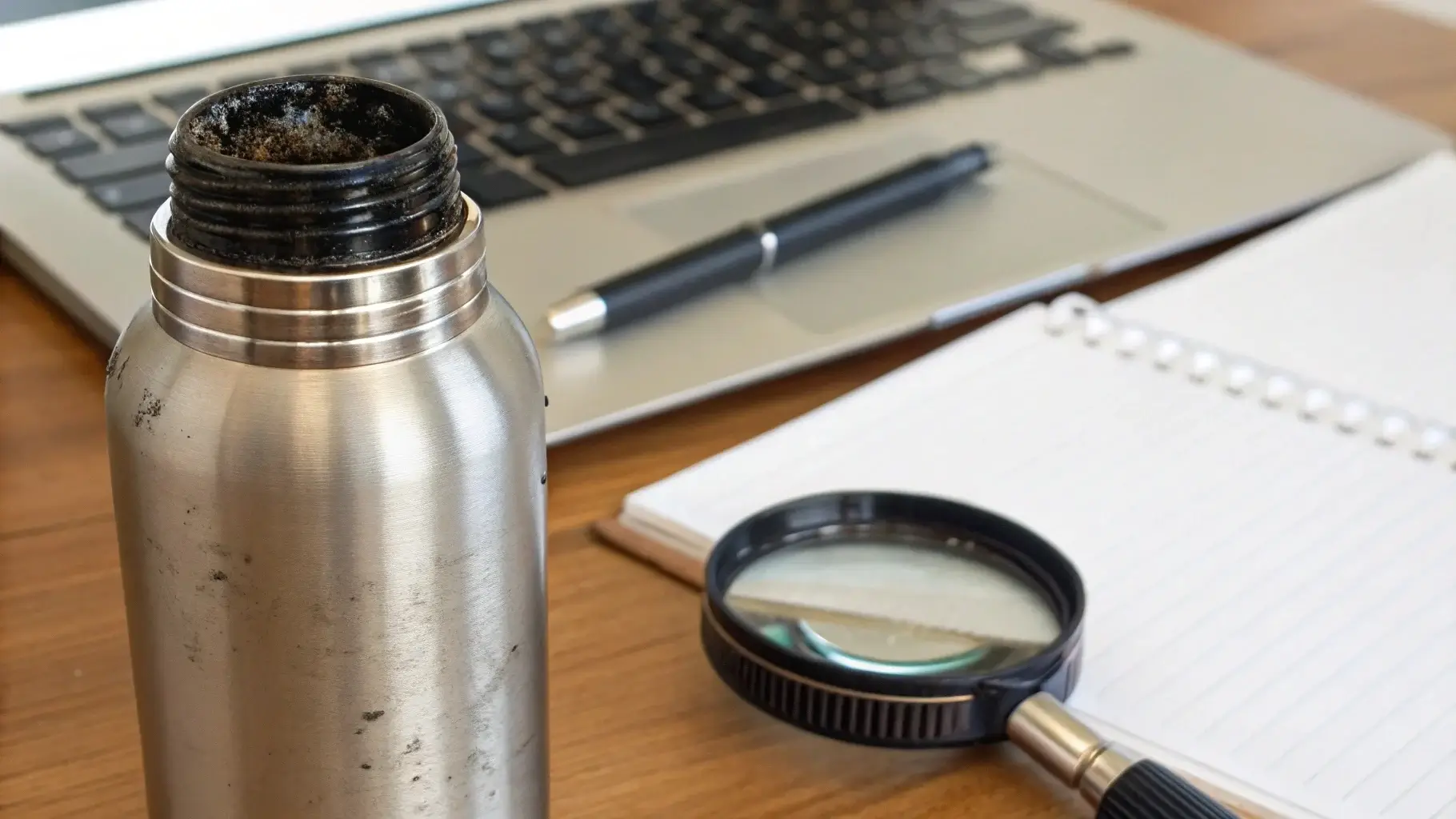
Possible Causes of Black Gunk
- Mold: Mold thrives in moist, dark environments, like inside a closed water bottle.
- Bacteria: Bacteria can form4 inside your bottle if it’s not cleaned regularly.
- Mineral Buildup: If you're using hard water, mineral deposits can accumulate inside your bottle over time, appearing as black specks.
How to Identify the Black Gunk
The easiest way to identify black gunk is to examine its texture. Mold usually appears fuzzy and can be scraped off with a fingernail. Mineral deposits, on the other hand, will be harder and will require scrubbing to remove.
What Are the Black Bits in My Water Bottle?
The black bits you notice might not be mold but could be remnants of dried water or impurities. These bits could be due to dirt, dust, or mineral deposits5 left behind from water evaporation.
Black bits in your water bottle may be harmless, but it's still important to clean your bottle regularly to prevent any buildup.
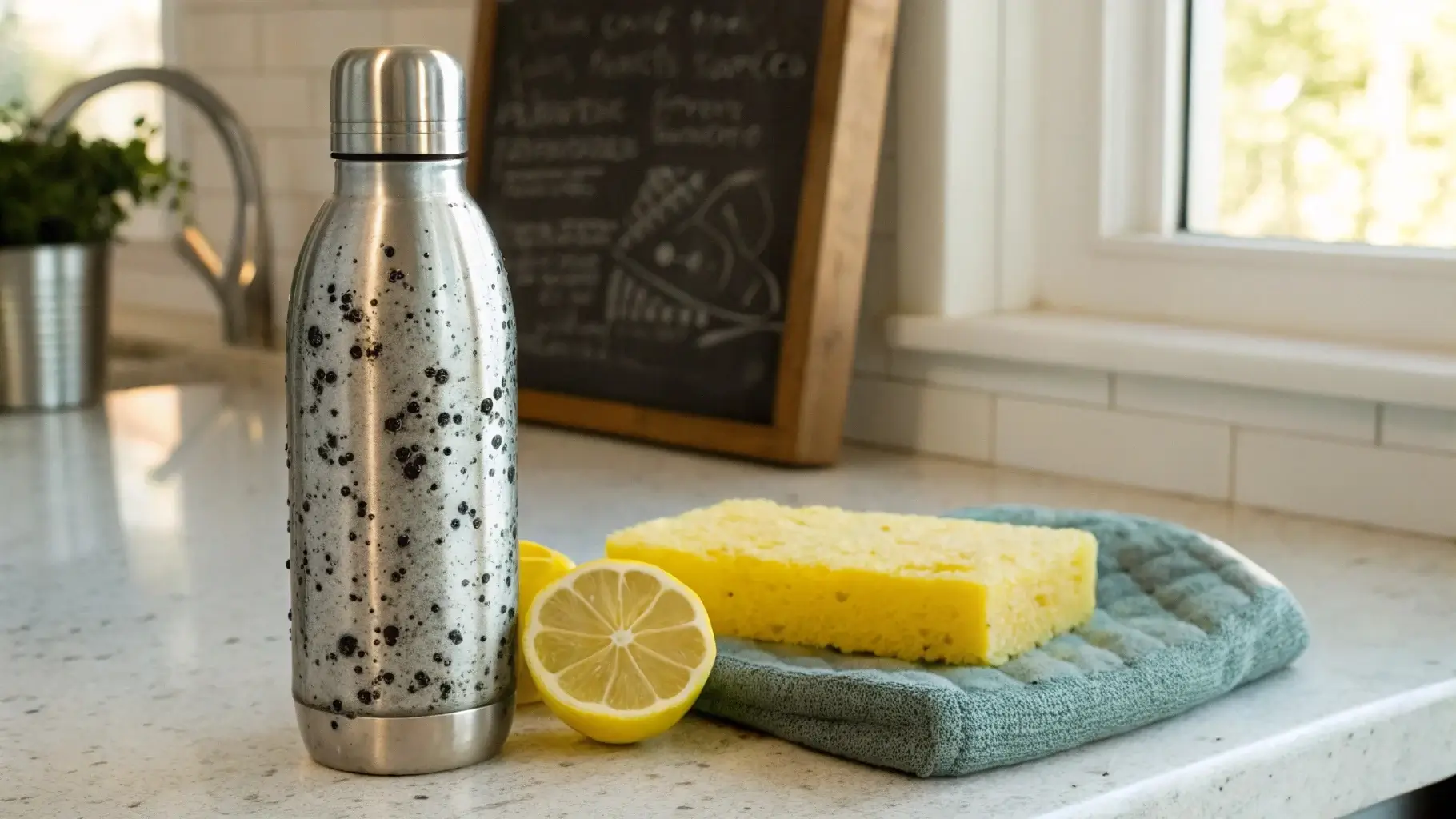
Causes of Black Bits
- Mineral Deposits: Hard water contains minerals like calcium and magnesium that can leave black marks in your bottle.
- Dirt or Dust: If the bottle is exposed to the environment, tiny particles of dirt and dust could get inside.
- Bacteria or Mold: If your bottle is left wet, mold or bacteria may develop, resulting in black bits forming inside.
How to Clean Black Bits
A thorough cleaning can usually remove black bits. Use a brush, warm water, and soap to scrub the inside of the bottle. For stubborn bits, you can use a vinegar and baking soda solution6 to break down the buildup.
Is the Black Stuff in My Water Dangerous?
The black substance inside your water bottle could be harmful, but it largely depends on what it is. If it's mold or bacteria, it can pose serious health risks. However, if it's just mineral buildup or debris, it’s less of a concern but still should be cleaned regularly.
The black stuff can be dangerous if it’s mold or bacteria. Cleaning your bottle thoroughly and regularly is the best way to prevent any health risks.
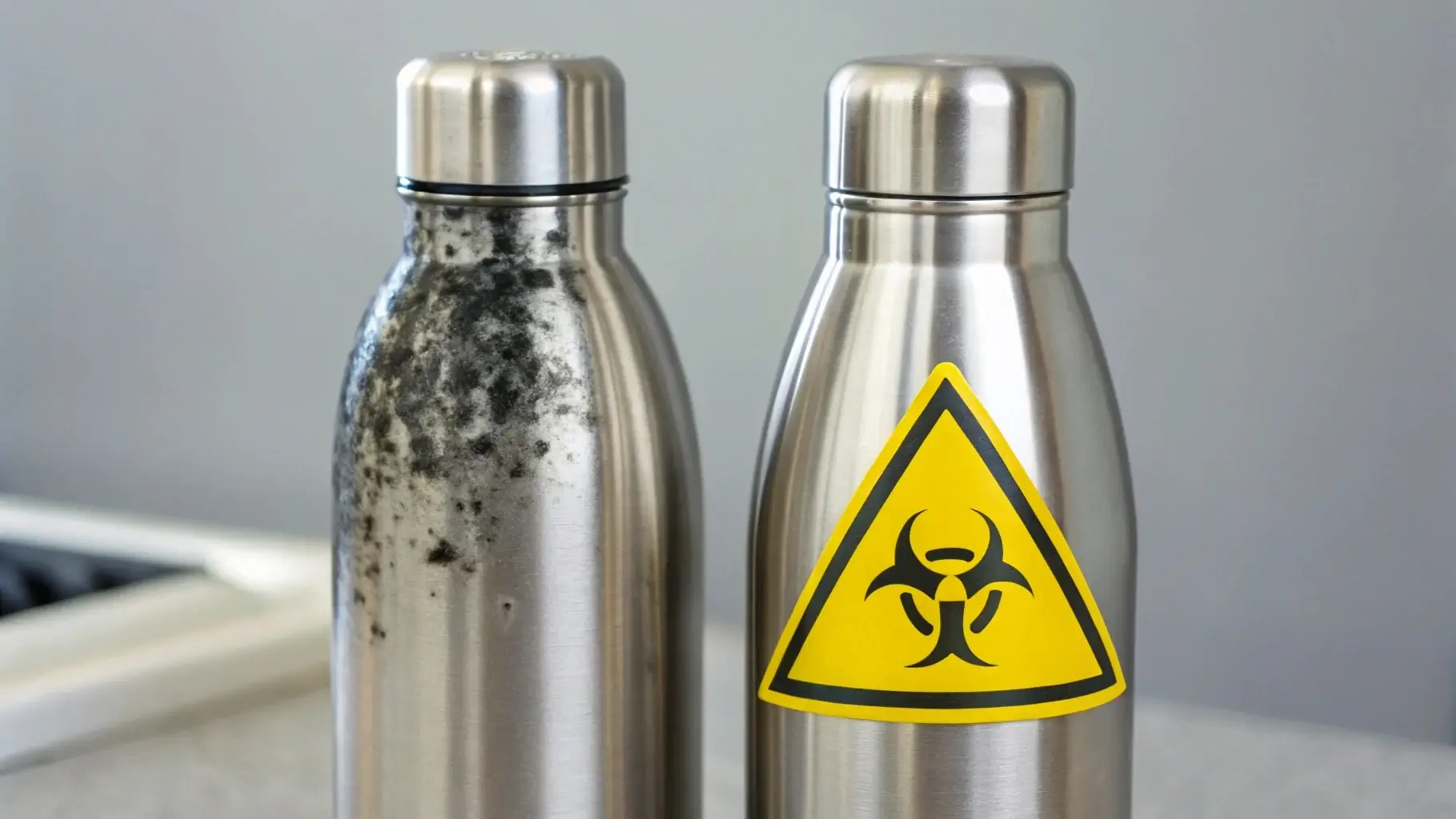
When Is It Dangerous?
- Mold: Mold can cause respiratory issues and allergic reactions. It's harmful to inhale mold spores or consume water that has mold in it.
- Bacteria: Harmful bacteria7 can grow in water bottles, especially if they're not cleaned frequently or left with standing water for long periods.
How to Avoid Contamination
- Regular Cleaning: Clean your bottle thoroughly with soap, warm water, and a brush.
- Dry Your Bottle: After use, always dry your water bottle completely before storing it to prevent moisture buildup.
Should I Throw Away a Water Bottle with Mold?
If you find mold in your water bottle, you don’t always have to throw it away. Depending on the severity of the mold and the material of the bottle, cleaning it properly can resolve the issue.
Throwing away a water bottle should be a last resort. In most cases, a deep clean will restore your bottle to a safe and usable condition.
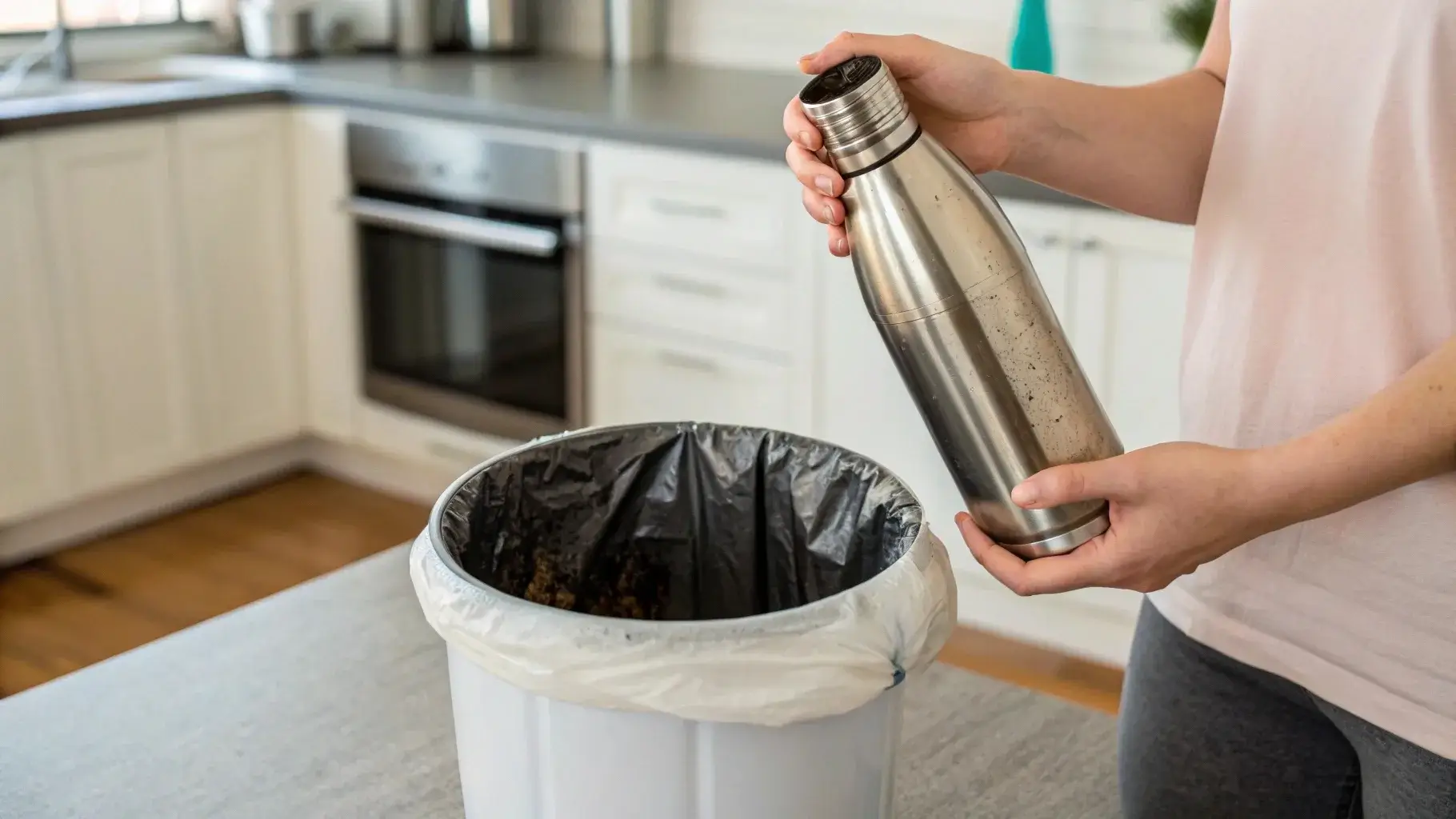
Steps to Save Your Bottle
- Inspect: Check for any signs of damage caused by mold.
- Clean Thoroughly: Use vinegar, baking soda, and warm water to scrub every corner of the bottle.
- Dry Completely: Ensure the bottle is thoroughly dried to avoid future mold growth.
When to Replace the Bottle
If the bottle has significant damage or mold that you can't remove, or if it’s made of materials that can’t be properly sanitized, replacing it8 may be necessary.
Is It Bad to Drink Water with Black Mold?
Drinking water contaminated with black mold is not safe. Mold produces spores that can cause allergic reactions, respiratory issues, and other health problems.
It is dangerous to drink water from a bottle with black mold. Always clean the bottle thoroughly and discard any water that has been sitting for too long.
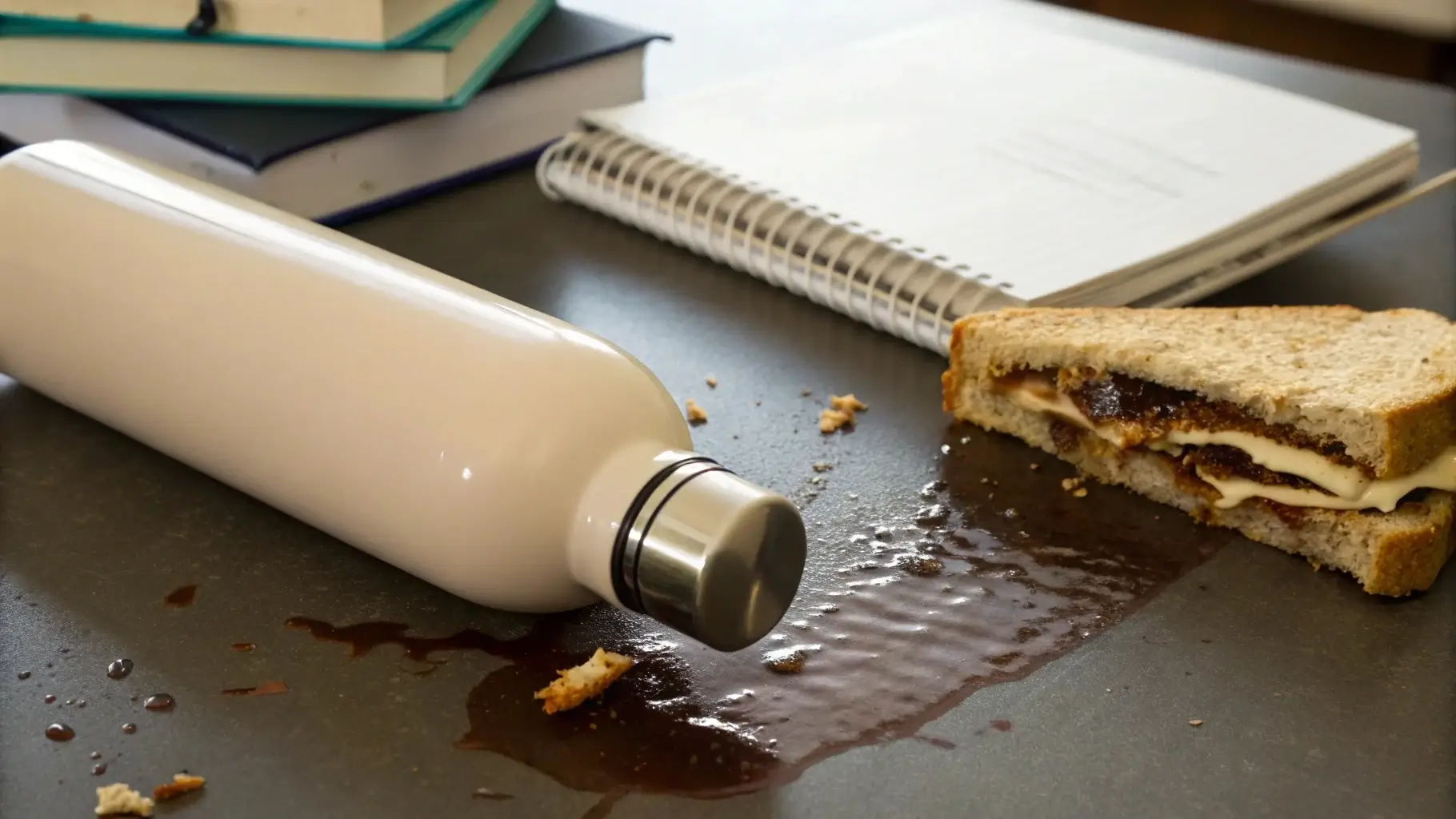
Risks of Drinking Moldy Water
- Respiratory Problems: Inhaling mold spores or drinking mold-contaminated water can cause asthma-like symptoms or other breathing issues.
- Gastrointestinal Issues: Mold in drinking water9 can lead to stomach problems, nausea, or vomiting.
How to Stay Safe
- Avoid Drinking From Contaminated Bottles: If you notice mold or gunk in your bottle, it’s better not to drink the water.
- Clean Your Bottle: Regularly clean your water bottle to keep it free from mold and bacteria.
Conclusion
The black gunk in your water bottle could be mold, bacteria, or mineral buildup. While it’s important to identify the substance, it’s crucial to clean your bottle regularly to avoid potential health risks. If mold is present, it’s best to clean the bottle thoroughly or replace it if necessary.
Footnotes:
-
Understand what substances cause black buildup in bottles ↩
-
Learn about the health effects of exposure to black mold ↩
-
See why bottles are ideal environments for mold growth ↩
-
Find out how bacteria can form inside unclean water bottles ↩
-
Learn how mineral deposits appear from hard water ↩
-
Get a natural cleaning method for breaking down buildup ↩
-
Understand the risks of bacterial contamination in drinkware ↩
-
Know when it’s better to replace a moldy or damaged water bottle ↩
-
Learn the health dangers of drinking mold-contaminated water ↩

